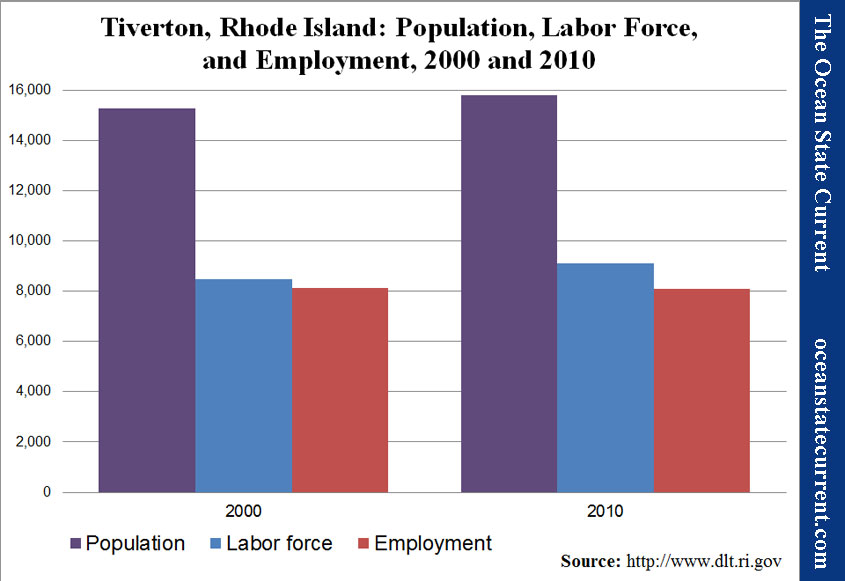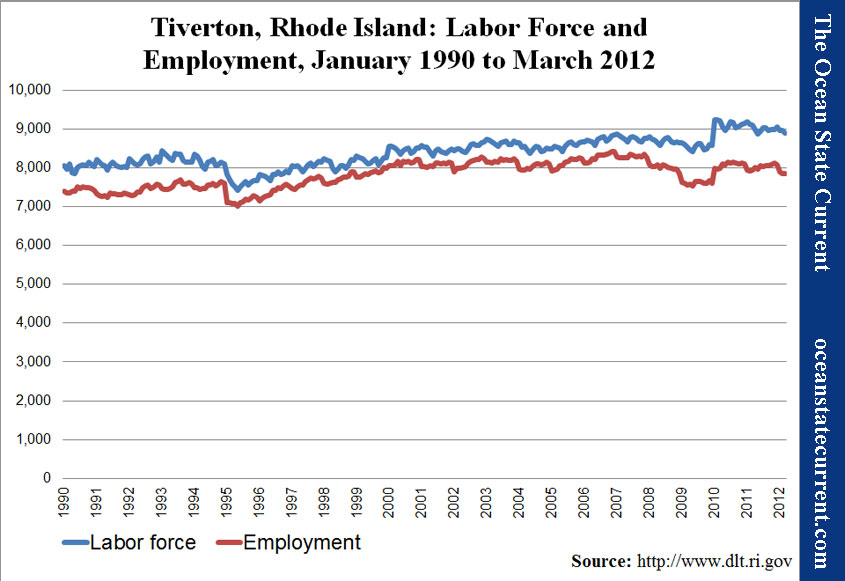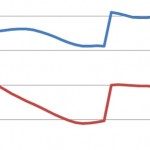State in Decline, Employment in RI Cities and Towns: Tiverton
The good news for Tiverton’s employment picture is that just-released March data shows its not-seasonally-adjusted unemployment rate to have fallen from from 12.4% in February to 11.8% in March, exactly the state average. The bad news is the reason that’s true: The town’s labor force fell more quickly than the number of employed residents, although both fell.
Tiverton’s experience was somewhat unique, in Rhode Island, during the decade between U.S. Census surveys. From 2000 to 2010, the town’s population grew 3.4%. During that time, its labor force grew 7.7%. Unfortunately, the number of employed residents just about held steady, slipping by 0.7%.
That could mean that people moving to Tiverton were unemployed. Alternately, residents were losing jobs at about the rate that people with jobs moved in. A third possibility is that Tiverton households sought incomes for more of their members. The likely scenario is a mixture of all three.
The effect of these trends has been to drive unemployment up. Looking at the 22 years of data provided by the Rhode Island Department of Labor and Training, Tiverton’s labor force is well above its average, but total employment is only slightly above average, meaning that the town is within a couple hundred residents of its record unemployment in February 2010.
In the following chart, unemployment is indicated by the distance between the two lines.
Note on the Data
The population data above comes from the U.S. Census conducted every ten years and is therefore generally considered reliable, to the extent that is used as reference for various government programs and voter districting.
The labor force and unemployment data, however, derives from the New England City and Town Areas (NECTAS) segment of the Local Area Unemployment Statistics (LAUS) of the federal Bureau of Labor Statistics (BLS). A detailed summary of the methodology is not readily available, but in basic terms, it is a model based on and benchmarked to several public surveys. It can be assumed that the sample rate (i.e., the number of people actually surveyed) in each Rhode Island town is very small (averaging roughly 30 people per municipality).
The trends shown, it must be emphasized, are most appropriately seen as trends in the model that generally relate to what’s actually happening among the population but are not an immediate reflection of it. Taking action on the assumption that the exact number of employed or unemployed residents shown corresponds directly to real people in a town would vest much too much confidence in the model’s accuracy.
Be that as it may, the data has been collected and published, and taken a town at a time, it is relatively easy to digest. So, curiosity leads the Current to see it as the best available data to deepen our understanding of trends within Rhode Island. If the findings comport with readers’ sense of how the towns relate to each other, perhaps lessons regarding local and statewide policies may be drawn. If not, then the lesson will be on the limitations of data in our era of information overload.






